| New York
Architecture Images- Recent Beekman Tower |
|
| Please note- I do not own the copyright for the images on this page. | |
|
architect |
Frank Gehry |
|
location |
8 Spruce Street |
|
date |
2010 |
|
style |
Blobitecture |
|
type |
Apartment Building |
|
construction |
903-unit luxury residential tower clad in stainless steel. RC frame. |
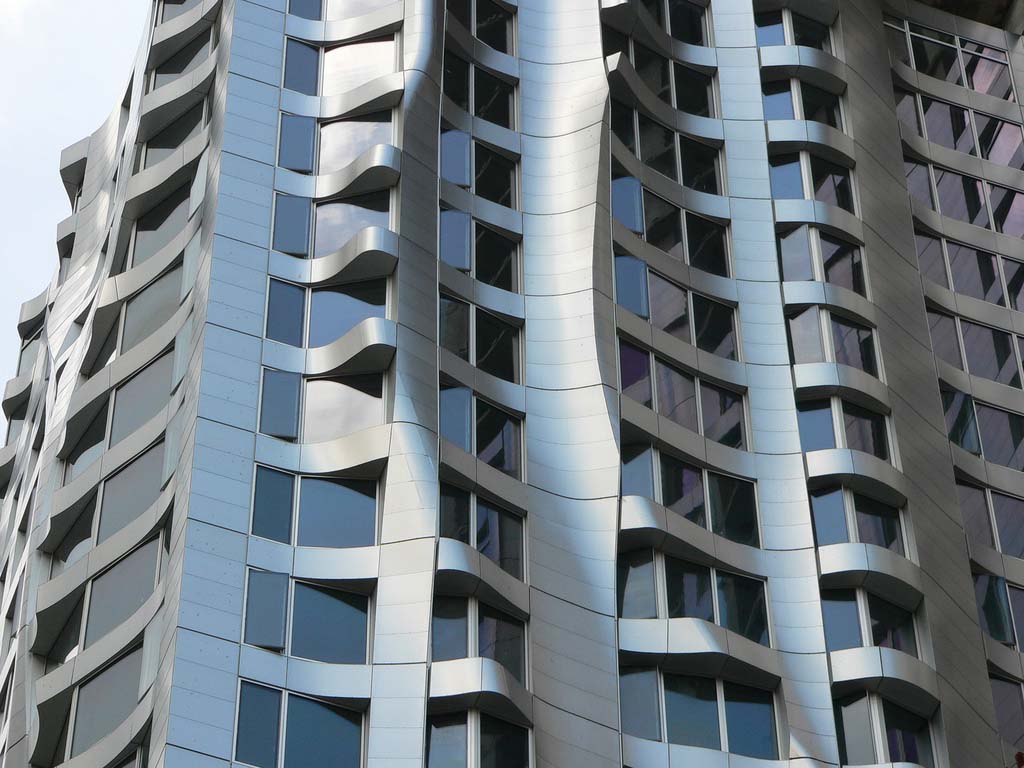 |
|
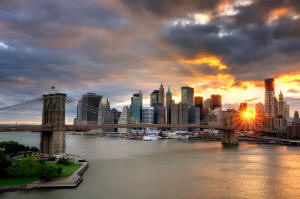  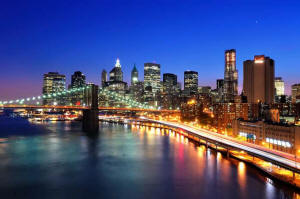 |
|
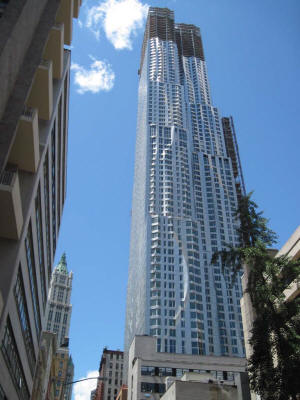 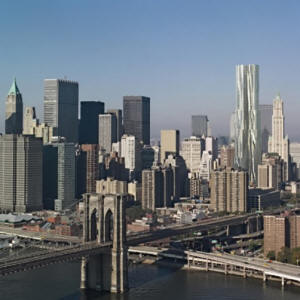  |
|
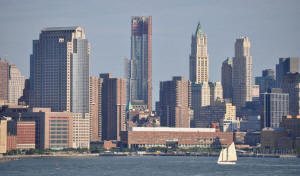 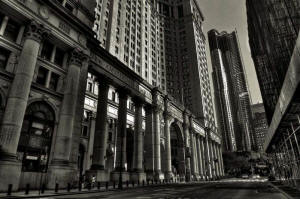 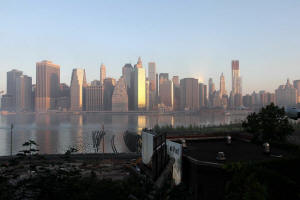 |
|
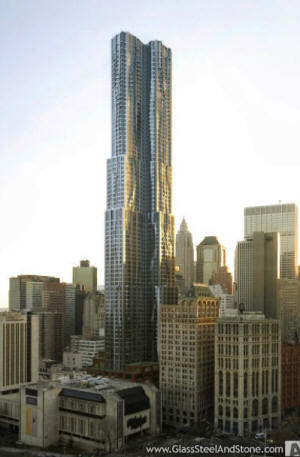 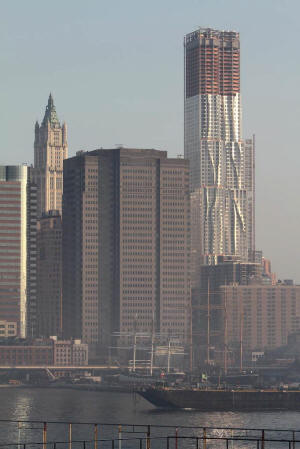  |
|
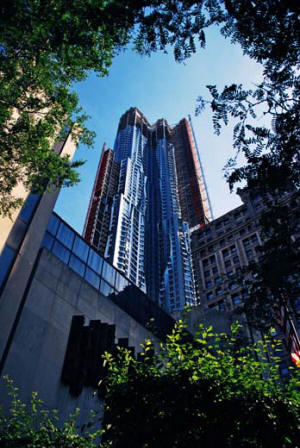 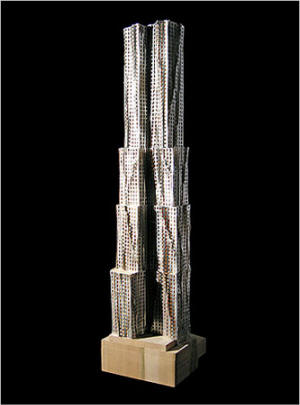 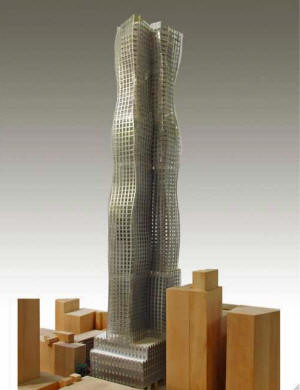 |
|
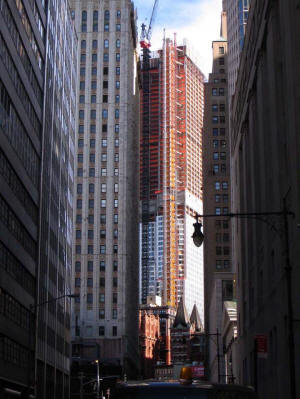  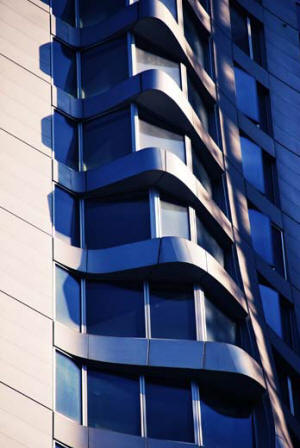 |
|
 |
|
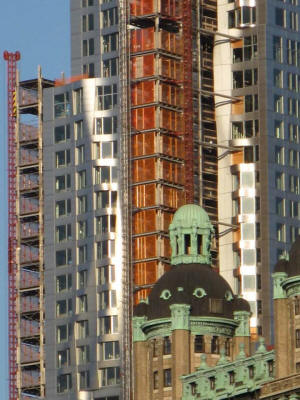 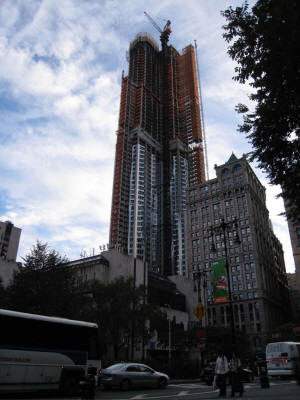 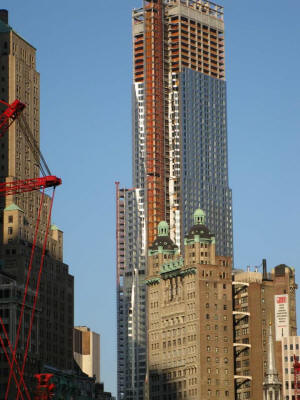 |
|
|
notes |
The Beekman, also known as Beekman Tower a is a 76-story
skyscraper designed by acclaimed architect Frank Gehry currently under
construction in the New York City borough of Manhattan at 8 Spruce Street,
just south of City Hall Plaza and the Brooklyn Bridge. It is also adjacent
to the main campus of Pace University.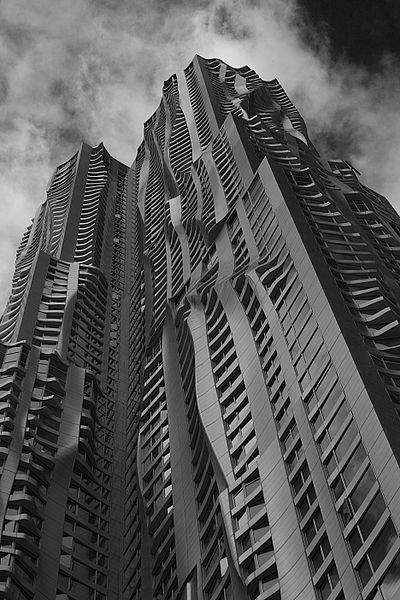 Details The Beekman Tower is one of the tallest buildings in New York City. Developed by Forest City Ratner , designed by Frank Gehry, construction to be completed by Kreisler Borg Florman. It contains a public elementary school, which the Department of Education will own. It is slated to open in 2010. Its structural frame is reinforced concrete. Public Elementary School The school will be sheathed in tan brick, covering the first five floors of the building. It will cover Pre-K through eighth grade. A 4th floor roof deck will hold 5,000 square feet (460 m2) of outdoor play space. The school will take up approximately 100,000 square feet (9,300 m2), and will seat 630 students. Luxury Rentals Above the elementary school will be a 903-unit luxury residential tower clad in stainless steel. It will not contain any units for purchase. The apartments will range 500 to 1,600 square feet (150 m2), and will consist of studios, one- two- and three-bedrooms. All will be priced at market-rate, with no rent control or discounted apartments. Other Space The building will also include space for New York Downtown Hospital. The hospital will take up 25,000 square feet (2,300 m2), and will have public parking below ground. There will be public plazas on both the east and west sides of the building, one 11,000 square feet (1,000 m2) and the other somewhat smaller. Street-level retail, totaling approximately 1,300-2,500 square feet, is included as part of the project.  |
|
|
|
|
|
Looking Skyward in Lower Manhattan Mr. Gehry first tried to break into the city’s architectural scene in the early 1980s, when he was hired to design a town house for the Upper East Side doyenne Christophe de Menil. The project ended in tears for Mr. Gehry when she fired him over a glass of Champagne.  Christophe de Menil Nearly 20 years later, his proposal for a mega-Guggenheim Museum on the East River was shelved for lack of funds. His plan for the colossal Atlantic Yards development in Brooklyn remains a pet target of grass-roots activists. And his first major New York building, a headquarters for the media and Internet conglomerate IAC on the West Side Highway, was recently disfigured by an enormous logo. So Mr. Gehry’s 76-story Beekman Tower, which is under construction just south of City Hall and whose latest design was released on Friday, should be considered long overdue. Rising just south of the entry ramps to the Brooklyn Bridge, it will join an imposing cluster of landmarks around City Hall, including Cass Gilbert’s 1913 neo-Gothic Woolworth Building and McKim, Mead & White’s 1914 Municipal Building, early examples of the city’s deep romance with the sky. Draped over a classical shell, the tower’s crinkled steel skin is proof that the skyscraper has yet to exhaust itself as an urban art form. Just as important, the design suggests that the city is slowly if hesitantly recovering from the trauma of 9/11. Only a few years ago, as plans were readied for a bunkerlike Freedom Tower downtown, it seemed as if the Manhattan skyline would be marred by jingoism and fear. Mr. Gehry’s tower, by contrast, harks back to the euphoric aspirations of an earlier age without succumbing to nostalgia. Like Jean Nouvel’s recently unveiled design for a West 53rd Street tower, which suggests shards of glass tumbling from the sky, it signals that the city is finally emerging from a long period of creative exhaustion. The design has evolved through an unusual public-private partnership. In an agreement with New York education officials, the tower’s developer, Forest City Ratner, agreed to incorporate a public elementary school into the project. Forest City was responsible for the construction of the school; the Department of Education then bought the building from the developer. (Forest City was also a development partner in the new Midtown headquarters of The New York Times Company.) The Beekman Tower is thus a curious fusion of public and private zones. Clad in simple red brick, the school will occupy the first five floors of the building. Atop this base will be the elaborate stainless-steel form of the residential tower, which will have its own entrance along a covered porte-cochere between Beekman and Spruce Streets. Only a few blocks from ground zero and Wall Street, the shimmering tower’s hypnotic pull will significantly reconfigure the downtown skyline. A classical T-shaped plan and sharp corners give the building an unexpected heft. As the structure rises, its forms will step back slightly, subtly breaking down the scale and bringing to mind a series of stacked toy blocks. The pattern shifts at each break, setting the composition slightly off balance and injecting an appealing sense of vulnerability. Yet what makes the tower so intoxicating is the exterior skin. Before dreaming up the design, Mr. Gehry checked into a room at the Four Seasons Hotel and spent days gazing out at the skyline. He experimented with dozens of configurations, from stoic to voluptuous, before opting for facades etched with a series of soft, irregular folds. This pattern strikes a perfect note. The folds evoke rivulets of water, crinkled sheets of aluminum foil, melting ice; their effect will be heightened by light and shadow dancing across the surfaces over the course of a day. Some of that emotion carries over to the interiors. The exterior folds are not merely decorative flourishes; they create a series of bays inside each of the apartments. The walls inside echo the dreamy, undulating pattern of the facade, as if the building were melting. Mr. Gehry was not allowed to tinker with the layout of the actual apartments. But in today’s real estate climate, where brokers impose the most conservative limits on design to maximize profits, this detail should be considered a major victory. If the project has a weakness, it is the disparate levels of creative energy invested in the building’s public and private spheres. Partly because of the budget constraints facing a typical public school, Mr. Gehry settled on a relatively straightforward design for the base. Its brick cladding, pierced by big industrial windows, verges on austere. So far the school’s interiors, designed by the New York firm Swanke Hayden Connell, seem dully conventional. By contrast, the residential tower’s entrance is invested with all of Mr. Gehry’s characteristic flair. Wavy panels made of steel trelliswork hang from the entry’s ceiling; big squat columns frame views to a small public garden outside. Such is the world we live in today. Under current circumstances the Beekman Tower is not a minor victory. A lesser architect might have spoiled one of the most fabled views in the Manhattan skyline. Instead Mr. Gehry has designed a landmark that will hold its own against the greatest skyscrapers of New York. It may even surpass them. Source- http://www.nytimes.com/2008/05/31/arts/design/31beek.html |
|
|
|